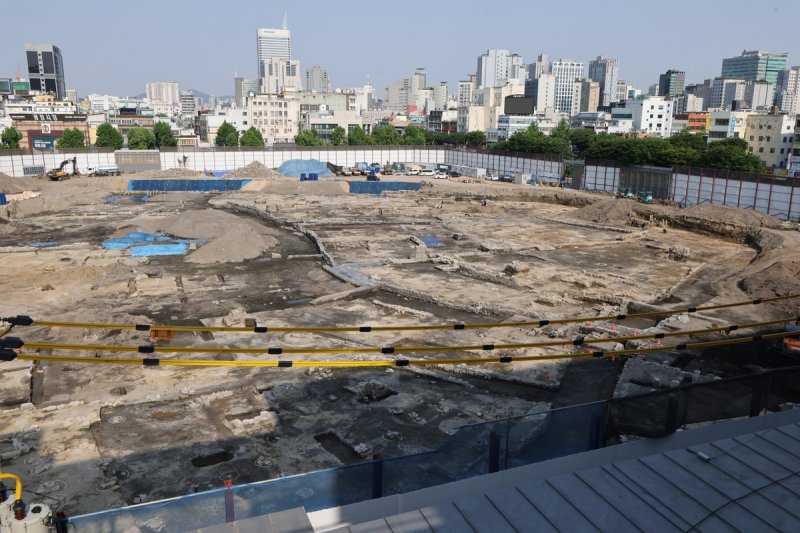Redevelopment of Sewoon District 4 in Front of Jongmyo Shrine Gains Momentum... Supreme Court of Korea Rules 'Ordinance Easing Development Near Cultural Heritage Sites Is Lawful'
- Input
- 2025-11-06 11:34:22
- Updated
- 2025-11-06 11:34:22

[Financial News] The Supreme Court of Korea has ruled that Seoul's ordinance revision easing development restrictions near cultural heritage sites is lawful. As a result of this decision, the redevelopment project for Sewoon District 4, located across from Jongmyo Shrine and previously embroiled in controversy over 'second royal tomb view apartments,' is expected to gain momentum.
On the 6th, the First Division of the Supreme Court of Korea (Presiding Justice Shin Sook-hee) sided with Seoul in a lawsuit filed by the Minister of Culture, Sports and Tourism (MCST) seeking to nullify the Seoul Metropolitan Government Ordinance on the Protection of Cultural Heritage. Lawsuits regarding the invalidation of ordinances are handled exclusively by the Supreme Court of Korea.
Previously, in October 2023, the Seoul Metropolitan Council deleted Article 19, Paragraph 5 of the Seoul Metropolitan Government Ordinance on the Protection of Cultural Heritage, which stated that 'even if construction occurs outside the preservation area, if it is deemed certain to affect cultural heritage, the impact must be reviewed.' Under the ordinance, the preservation area is defined as within 100 meters from the outer boundary of a nationally designated heritage site. The deleted provision had imposed restrictions even beyond this 100-meter radius.
In response, the Korea Heritage Service (formerly the Cultural Heritage Administration) argued that this violated the Cultural Heritage Protection Act. According to the Act, any revision to the ordinance requires consultation with the Cultural Heritage Administration, but the council made a unilateral decision. At the request of the head of the Cultural Heritage Administration, the MCST asked Seoul Mayor Oh Se-hoon to request a reconsideration by the council. However, Mayor Oh declined, the ordinance was promulgated, and the dispute escalated to a lawsuit.
The Supreme Court of Korea stated, 'Higher-level laws do not mandate that matters concerning the protection of designated cultural heritage beyond the historical and cultural environment preservation area must be established by ordinance through consultation with the head of the Cultural Heritage Administration.' The court added, 'Even if consultation did not occur, this does not constitute a violation of the principle of legal supremacy.'
The Cultural Heritage Protection Act stipulates that provincial governors must consult with the head of the Korea Heritage Service to designate preservation areas for the historical and cultural environment of designated cultural heritage by ordinance. However, the court clarified that areas outside the preservation zone are not subject to this consultation requirement.
The court further noted, 'The Local Autonomy Act stipulates that local governments may enact ordinances concerning their affairs within the scope of the law.' It continued, 'Deleting an ineffective ordinance provision that exceeds the scope of the law through proper amendment procedures is a legitimate exercise of authority and, barring special circumstances, remains valid.'
With this Supreme Court of Korea decision, the redevelopment project for Sewoon District 4, located across from the United Nations Educational, Scientific and Cultural Organization (UNESCO) World Heritage-listed Jongmyo Shrine, is expected to proceed without delay.
The Seoul Metropolitan Government announced on the 30th of last month that it had finalized the 'Sewoon District Redevelopment Promotion Zone and District 4 Redevelopment Promotion Plan,' which adjusts the maximum height of buildings along Jongno from 55 meters to 98.7 meters and those along Cheonggyecheon Stream from 71.9 meters to 141.9 meters.
While concerns have been raised about the potential impact on the Jongmyo Shrine landscape, Seoul officials maintain that Sewoon District 4 is approximately 180 meters from Jongmyo Shrine and, therefore, is not subject to regulatory restrictions.
With the Supreme Court of Korea confirming that deleting the provision regulating construction outside preservation areas poses no legal issues, the Seoul Metropolitan Government can now move forward with the project without obstacles.
jisseo@fnnews.com Seo Min-ji Reporter